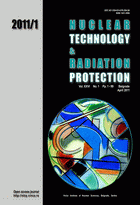
ANNEALING OF RADIATION-INDUCED DEFECTS IN
BURN-IN STRESSED POWER VDMOSFETs
Pages: 18-24
Authors: Snežana M. Đorić-Veljković, Ivica Dj. Manić, Vojkan S. Davidović, Danijel M. Danković, Snežana M. Golubović, Ninoslav D. Stojadinović
Abstract
The annealing of radiation-induced defects in burn-in stressed n-channel power VDMOSFETs with thick gate oxides (100 and 120 nm) is analysed. In comparison with the previous spontaneous recovery, the changes of device electrical parameters observed during annealing are highlighted by the elevated temperature and voltage applied to the gate, and are more pronounced in devices with a 120 nm thick gate oxide. The threshold voltage of VDMOSFETs with a 100 nm thick gate oxide during annealing has an initially slow growth, but then increases rapidly and reaches the value higher than the pre-irradiation one (rebound effect). In the case of devices with a 120 nm thick gate oxide, the threshold voltage behaviour also consists of a slight initial increase followed by a rapid, but dilatory increase, with an obvious tendency to achieve the rebound. The changes of channel carrier mobility during annealing are similar in all samples: at first, it slowly and then rapidly declines, and after reaching the minimum it begins to increase. In the case of VDMOSFETs with a thicker gate oxide, these changes are much slower. The underlying changes in the densities of gate oxide-trapped charge and interface traps are also delayed in devices with a thicker gate oxide. All these phenomena occur with certain delay in burn-in stressed devices compared to unstressed ones. The leading role in the mechanisms responsible for the observed phenomena is attributed to hydrogen related species.
Key words: VDMOSFET, threshold voltage, channel carrier mobility, rebound effect, gate oxide
charge, interface traps, latent interface trap buildup, burn-in
FULL PAPER IN PDF FORMAT ( 562 KB)
